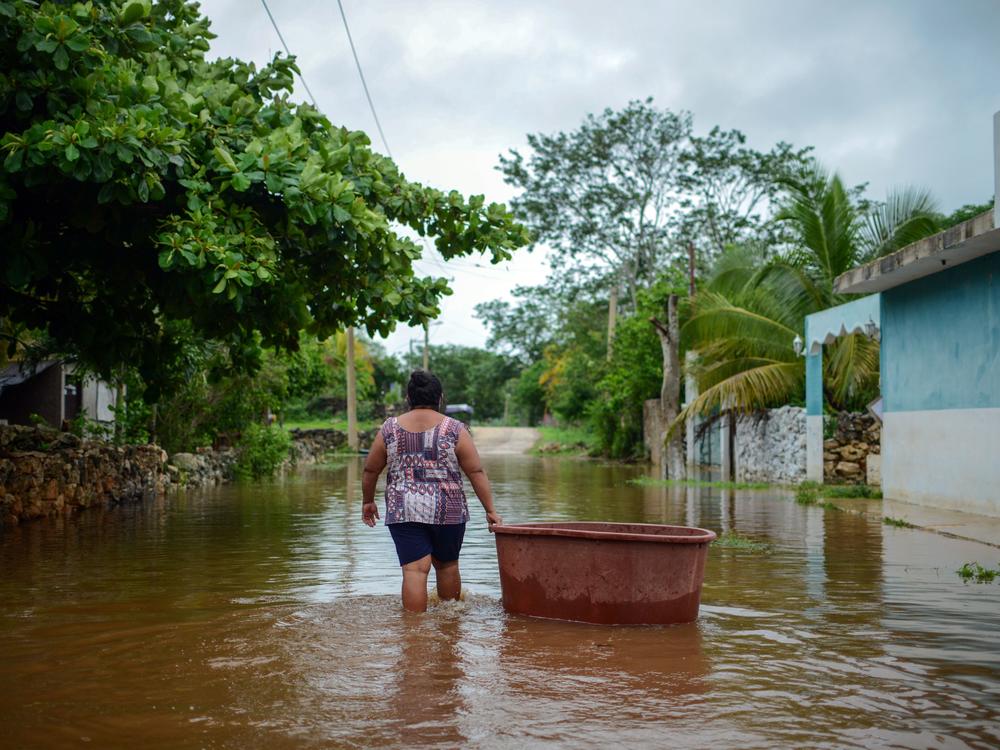Section Branding
Header Content
Expect An Above Average Atlantic Hurricane Season This Year
Primary Content
We're likely to see an above-average hurricane season in the Atlantic this year, according to the latest forecast from the National Oceanic and Atmospheric Administration.
The agency predicts 13 to 20 named storms in the 2021 season in the Atlantic. Of those, NOAA is forecasting six to 10 to become hurricanes, with top winds of at least 74 mph. Three to five of those storms are predicted to become major hurricanes ranked as Category 3, 4, or 5, with top winds of at least 111 miles per hour.
The agency says there's a 60% chance of an above-normal Atlantic hurricane season — but it's not expected to be as busy as last year's, which set the all-time record with 30 named storms.
There were so many named storms in 2020, that the list of names was exhausted, and they started taking the names of Greek letters.
"Based on our current data and analysis, we do not expect a 2021 hurricane season to be as active as 2020. However, we do update our seasonal outlook in August, as we do each year before we move into the peak of the hurricane season," said Matthew Rosencrans, lead seasonal hurricane forecaster at NOAA's Climate Prediction Center.
The Atlantic hurricane season doesn't officially start until June 1. But there's a storm brewing already that could turn into a subtropical cyclone — and become "Ana," the first name on the 2021 list of cyclone monikers.
It's been common in recent years to have one named storm before the season's official start. Rosencrans says there have been discussions about changing the June 1 date, but it's not changing this year.
NOAA also said it's changing what constitutes a "normal" season, based on the last two decades of hurricanes.
Going forward, an average Atlantic hurricane season will have 14 named storms, seven hurricanes and three major hurricanes. The previous season averages were 12 named storms, six hurricanes, of which three were major.
Since 1995, we've been living in what scientists have termed a "high-activity era" for Atlantic hurricane seasons, what NOAA explains is "a natural, cyclical phenomenon."
The new averages can't be directly attributed to climate change, Rosencrans said.
"Climate change does not have a direct impact on the number of named storms," according to the latest research, he said. "Most of the increase in storms is really a reflection of the better technology to detect the storms."
That technology includes satellites that offer a better understanding of storm structure, lead more of them to be declared tropical storms. Specially equipped NOAA aircraft known as "hurricane hunters" also provide information on actual strength of storms.
But as NPR's Rebecca Hersher has reported, researchers have found that big, deadly hurricanes are getting more likely. In recent years, some storms have turned into major hurricanes very quickly – and that rapid intensification is one hallmark of climate change.
So what does NOAA's forecast mean for the outlook in regions of the U.S. and other countries along the Atlantic? It's too soon to tell. The best information for specific areas is available about a week before a storm makes landfall.
Officials from NOAA and the Federal Emergency Management Agency have urged those living in hurricane zones to prepare now, well before a storm comes. Guidance on how to prepare for hurricanes can be found at ready.gov/hurricanes.
"Regardless of the predicted seasonal activity, it's important to remember it takes only one dangerous storm, to devastate a community and lives," Rosencrans said.
Copyright 2021 NPR. To see more, visit https://www.npr.org.

